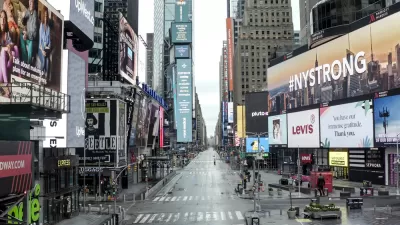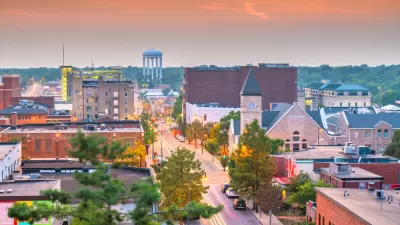For the first time in at least three decades, major metropolitan areas in the U.S. showed negative population growth during the peak of the COVID-19 pandemic.

Data from the U.S. Census Bureau shows a strong trend toward outmigration from big cities between July 2020 and July 2021, when the pandemic was at its peak. According to a piece by William H. Frey, “These shifts occurred during a year in which the nation registered its lowest population growth (0.1%) in at least 120 years, due to sharply reduced immigration from abroad and much lower levels of natural increase (the excess of births over deaths).”
The pandemic accelerated existing trends, Frey writes, pointing to more restrictive immigration laws and a decline in childbirths for many groups as factors for lower population growth nationwide. “The onset of the pandemic-accelerated growth slowdown in major metro areas led to an absolute population loss in 2020-21 among those areas combined. This is the first time the nation’s major metro areas registered an annual negative growth rate since at least 1990.”
The article expresses optimism that pandemic-era trends will reverse and population growth will return to a healthier growth rate. But it remains to be seen how the change in commuting patterns and the amenities people prioritize will impact the growth of large cities, and whether the recent popularity of small towns and suburbs with younger households will lead to a shift in the suburban form and more sustainable suburban planning.
FULL STORY: New census data shows a huge spike in movement out of big metro areas during the pandemic

Planetizen Federal Action Tracker
A weekly monitor of how Trump’s orders and actions are impacting planners and planning in America.

Congressman Proposes Bill to Rename DC Metro “Trump Train”
The Make Autorail Great Again Act would withhold federal funding to the system until the Washington Metropolitan Area Transit Authority (WMATA), rebrands as the Washington Metropolitan Authority for Greater Access (WMAGA).

DARTSpace Platform Streamlines Dallas TOD Application Process
The Dallas transit agency hopes a shorter permitting timeline will boost transit-oriented development around rail stations.

Renters Now Outnumber Homeowners in Over 200 US Suburbs
High housing costs in city centers and the new-found flexibility offered by remote work are pushing more renters to suburban areas.

The Tiny, Adorable $7,000 Car Turning Japan Onto EVs
The single seat Mibot charges from a regular plug as quickly as an iPad, and is about half the price of an average EV.

Supreme Court Ruling in Pipeline Case Guts Federal Environmental Law
The decision limits the scope of a federal law that mandates extensive environmental impact reviews of energy, infrastructure, and transportation projects.
Urban Design for Planners 1: Software Tools
This six-course series explores essential urban design concepts using open source software and equips planners with the tools they need to participate fully in the urban design process.
Planning for Universal Design
Learn the tools for implementing Universal Design in planning regulations.
Municipality of Princeton
Roanoke Valley-Alleghany Regional Commission
City of Mt Shasta
City of Camden Redevelopment Agency
City of Astoria
Transportation Research & Education Center (TREC) at Portland State University
US High Speed Rail Association
City of Camden Redevelopment Agency
Municipality of Princeton (NJ)





























